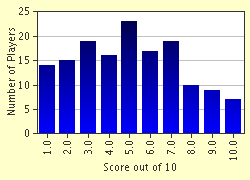Quiz Answer Key and Fun Facts
1. What name is given to the Acts of Parliament of 1799 and 1800, which forbade workers to combine together to raise wages or improve working conditions?
2. In 1834 six Dorset farm labourers were sentenced to be transported to Australia, ostensibly for the crime of administering an unlawful oath. By what name are these men usually known?
3. A famous strike took place in July 1888, involving 1,500 female employees at the factory of Bryant and May at Bow in East London. What did Bryant and May manufacture?
4. In August and September 1889 the London dockers went on strike. What was their main demand?
5. In a court case in 1901, it was ruled that a union was liable to pay damages to an employer for losses occasioned by a strike. This case is generally known by the name of the plaintiff, which was a small railway company. What was this name?
6. The Osborne judgment of 1909, given against a railwaymen's union, was a further setback for unions. What did the judgment forbid unions to do?
7. Who was the Prime Minister of the United Kingdom at the time of the General Strike?
8. An agreement between TUC-affiliated unions was signed in 1939 to prevent unions from 'poaching' one another's members. It takes its name from a seaside town. What is it called?
9. Which trade union leader became Minister of Labour in the wartime coalition government?
10. In 1984 the government banned trade unions in which government office?
Source: Author
TabbyTom
This quiz was reviewed by our editing team before going online.
Any errors found in FunTrivia content are routinely corrected through our feedback system.


